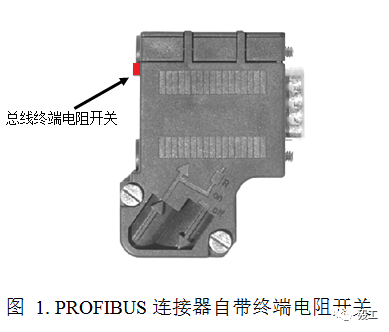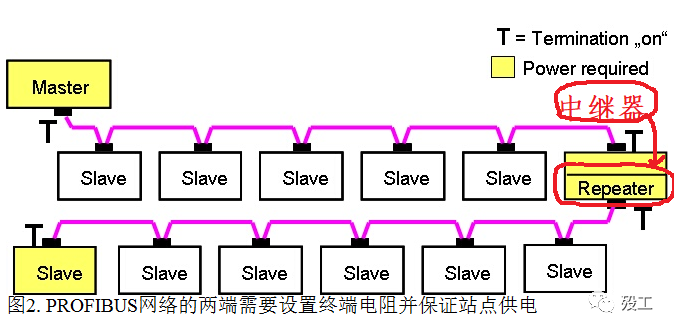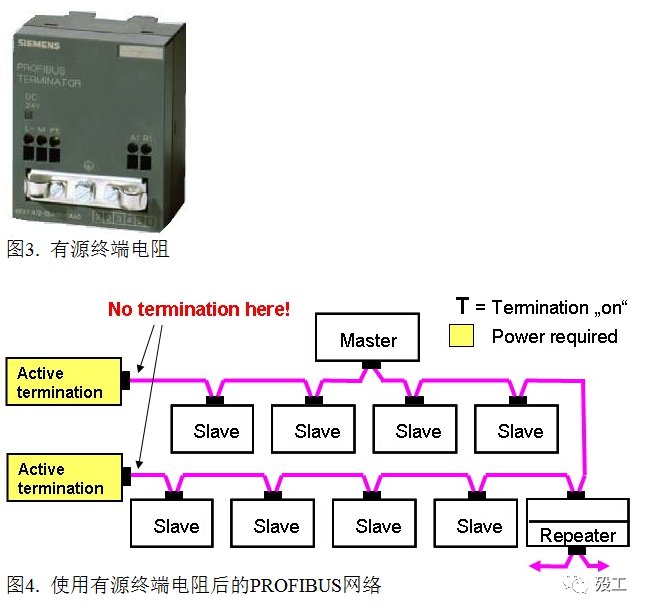When transmitting voltage signals over an electrical network, if the impedance at the end of the transmission line suddenly becomes infinite, the voltage signal will cause reflections at that point. The reflected signal superimposes on the normal signal, affecting communication. To eliminate such reflections, a terminal resistor that matches the characteristic impedance of the cable must be connected at the end of the cable, ensuring continuous impedance. Since the signal transmission on the cable is bidirectional, a terminal resistor of the same size must also be connected at the other end of the communication cable. Therefore, the PROFIBUS system requires terminal resistors to be connected at both ends of the cable to eliminate signal reflections in the communication cable.
Generally, Siemens PROFIBUS bus connectors have this terminal resistor built-in. When using this connector at the ends of the bus segment, the dip switch on it should be turned on, thereby connecting the terminal resistor. This ensures that the characteristic impedance of the cable equals the terminal resistor at the end of the bus, eliminating interference from reflected transmission signals.

In a physical network segment, it should be ensured that there is a terminal resistor at both ends of the network, and neither can be added nor removed; otherwise, there will be a mismatch between the PROFIBUS bus and the terminal resistors, which may lead to communication issues. At the same time, the terminal resistor specified by PROFIBUS is an active resistor, and if a terminal site experiences hardware issues or power failure, it may affect the communication quality of the entire network.

Siemens also provides active terminal resistor devices that can be powered separately and installed at both ends of the network segment, ensuring that power outages at terminal sites do not affect communication.
